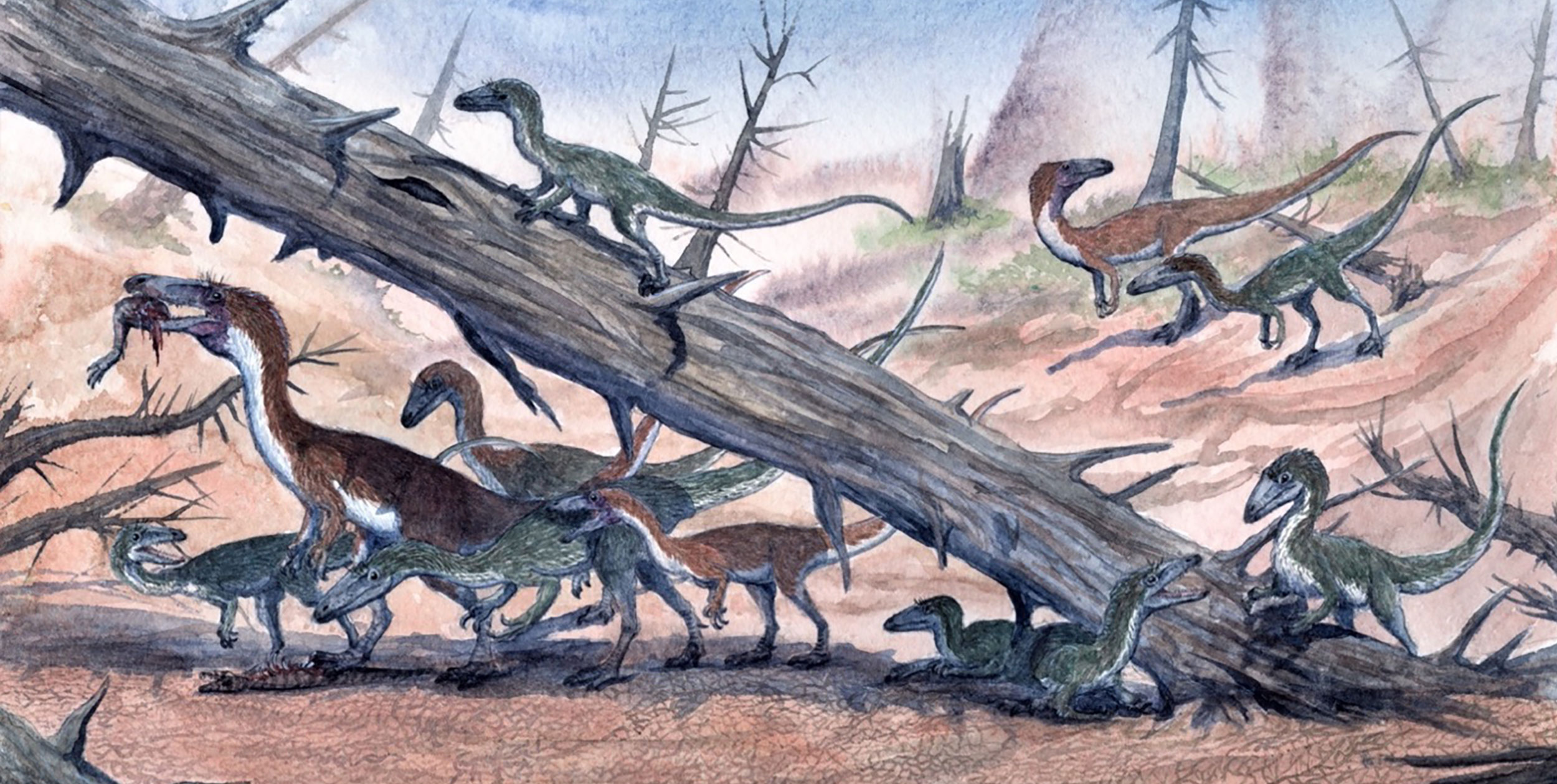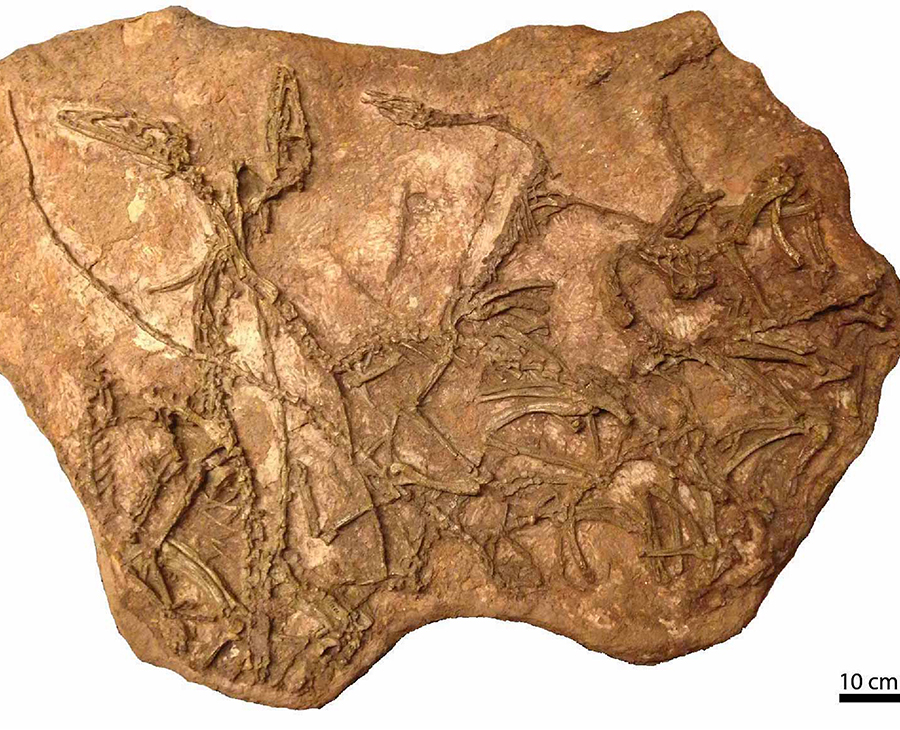
Early carnivorous dinosaur had highly flexible growth according to OSU-COM CN professor
Wednesday, October 26, 2022
Media Contact: Sara Plummer | Communications Coordinator | 918-561-1282 | sara.plummer@okstate.edu
A team of researchers, including Daniel Barta, Ph.D., Oklahoma State University College of Osteopathic Medicine at the Cherokee Nation assistant professor of anatomy, have unveiled new details about how a 200-million-year-old carnivorous dinosaur grew.
Their research, published in the peer-reviewed journal Scientific Reports, examined thin slices of two dozen dinosaur bones under a microscope to determine how old they were and whether they gained the same or different amounts of bone each year.
Barta, lead author and alumnus of the Richard Gilder Graduate School at the American Museum of Natural History (AMNH), worked with co-authors Christopher Griffin, Ph.D., a postdoctoral fellow at Yale University, and Mark Norell, Ph.D., curator emeritus at the AMNH.

In 1947, an AMNH field team discovered a bonebed at Ghost Ranch, New Mexico, that contained hundreds of skeletons of the early carnivorous dinosaur, Coelophysis bauri. Subsequent excavations by other institutions uncovered more skeletons and it was determined that C. bauri was a relatively small hunter, about the size of a medium-sized dog with a long neck and numerous sharp teeth.
The dinosaurs are thought to have perished all at once due to drought or other harsh environmental conditions, giving researchers a unique opportunity to understand the age composition of a dinosaur population.
“It’s very unusual to have so many dinosaur skeletons preserved all in the same place, which provides us with a bigger sample size than most other dinosaur studies” Barta said. “It’s particularly interesting that the animals span a wide range of sizes.”
It’s long been a mystery whether some or all of the C. bauri were adults. Previous studies by the team members showed that the development of external features of the bones, like muscle scars and bone fusions, was not strongly correlated with body size.
The most reliable way to age a dinosaur, however, is to look deeper, imaging thin slices of bone in a method analogous to how bone tissue is studied in medical research.
“Previous work has suggested, just based on their anatomy, that these animals were extremely variable in their growth, but the only way to tell for sure was to look inside the bones,” said Griffin.
The bone slices revealed yearly growth lines, like tree rings, that the team counted to age the dinosaurs. The researchers’ new work reveals that most of the C. bauri were immature, only one to four years old. They confirmed that body size was not a good indicator of age.
“This strongly suggests that different Coelophysis individuals varied greatly in how much they grew each year,” Barta said.
The research team said this is consistent with findings from long-necked herbivorous dinosaurs like the South African Massospondylus, implying that it was a common trait among these early dinosaur groups that may have helped them survive changing environmental hardships during the mass extinction at the end of the Triassic period over 200 million years ago.
“Studies like this demonstrate the importance of maintaining museum collections and using new approaches to study them. Fossil bones are still full of surprises,” Barta said.
